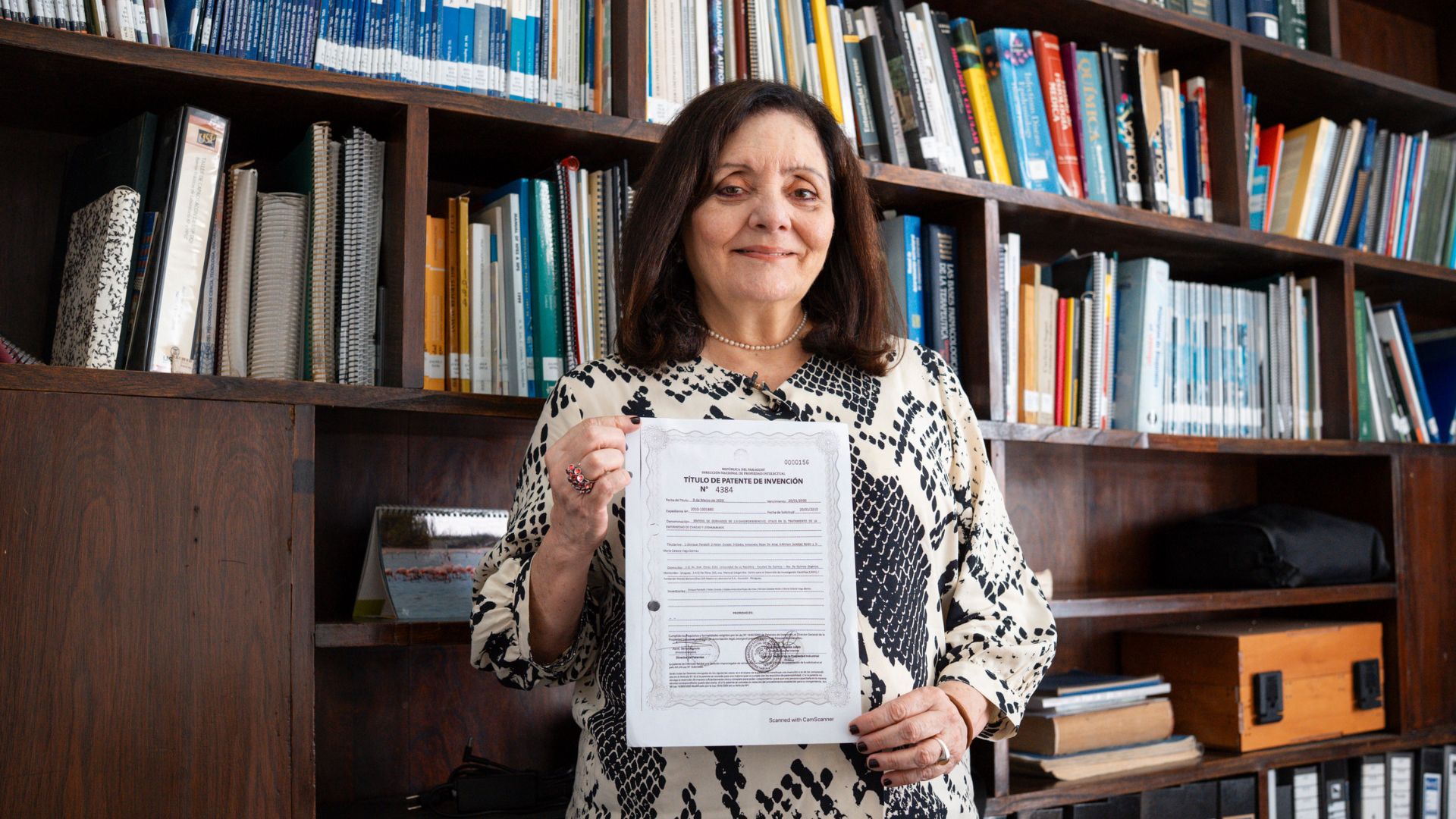Paraguayan winner of the Ingenias LATAM 2025 award invented innovative molecules for the treatment of Chagas disease and leishmaniasis
Dr Gladys Antonieta Rojas de Arias, biologist and inventor of compounds (synthetic molecules) derived from 2,5-dihydroxybenzyl, was announced as the Paraguayan winner of the Ingenias LATAM 2025 award for her nationally protected invention for the treatment of Chagas disease and leishmaniasis. The award is an initiative of the European Union Intellectual Property Office (EUIPO), in the framework of the EU-funded AL-INVEST Verde DPI project. Its objective is to give visibility and promote female talent in the field of intellectual property (IP) and innovation in Latin America. The award ceremony took place on 4 September at the headquarters of the National Institute of Industrial Property (INAPI) of Chile in Santiago de Chile, co-organiser and host of this first edition of the award focused on women inventors with inventions protected by IP rights.
Dr. Rojas de Arias' scientific curiosity was born in her childhood, observing insects and collecting crabs on the Venezuelan coast, her country of origin. Her professional career took her from Venezuela, where she studied biology, to São Paulo (Brazil) and Wales, specialising in zoology, public health and medical entomology. She finally settled and naturalised in Paraguay, where she has dedicated her career to the control and treatment of neglected vector-borne diseases that affect millions of people in the region, especially the poorest: ‘Both Chagas and Leishmaniasis are diseases linked to poverty, they are social pathologies and attack vulnerable populations due to the situation and living conditions in which they develop,’ she says. In Latin America alone, more than 6 million people live with Chagas disease, and up to 1.5 million new cases of leishmaniasis are reported each year worldwide, with a high concentration in rural and marginalised areas.
After decades of research, Dr. Rojas de Arias and her team developed an accessible and efficient method to synthesise compounds derived from 2,5-dihydroxybibenzyl with proven activity against the parasites responsible for Chagas disease and leishmaniasis. Unlike the natural compound, this invention allows it to be obtained from molecules available on the market, by means of a simple process with a high potential for industrial application in the manufacture of pharmaceutical treatments. The invention is protected by IP in Paraguay with DINAPI, which opened the door to its technology transfer. ‘Once I obtained the patent, my priority was to put it at the service of those who need it most; that is why I decided to make it available to an NGO committed to the development of accessible medicines to combat Chagas disease and leishmaniasis,’ said the researcher.
Dr Rojas de Arias has been a key and award-winning figure in strengthening Paraguay's scientific ecosystem: she was the first woman to chair the Paraguayan Scientific Society in its 96-year history, ‘that position gave me a platform that helped me to travel around the country presenting the importance of science development in Paraguay,’ she added, and she has been an advisor to the National Council of Science and Technology. She also promoted the creation of Paraguay's Law No. 7064/2023, which created the National System of Researchers and established the career of the Scientific Researcher, approved in 2013, laying the legal foundations to boost scientific research in the country. She is also co-founder, researcher and former technical director of the Centre for the Development of Scientific Research (CEDIC, 2008), a non-profit institution dedicated to research on tropical diseases with an emphasis on the link between health and the environment and to training young researchers. She currently promotes scientific and technological research in the area of data science at the Universidad Comunera.
